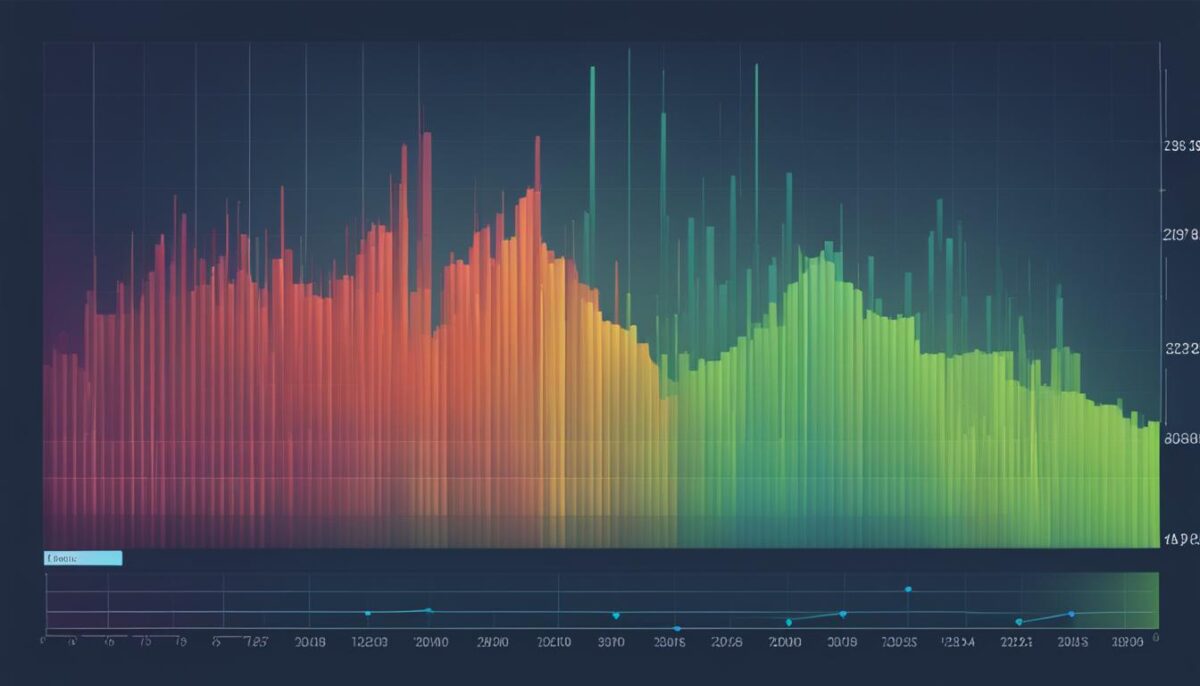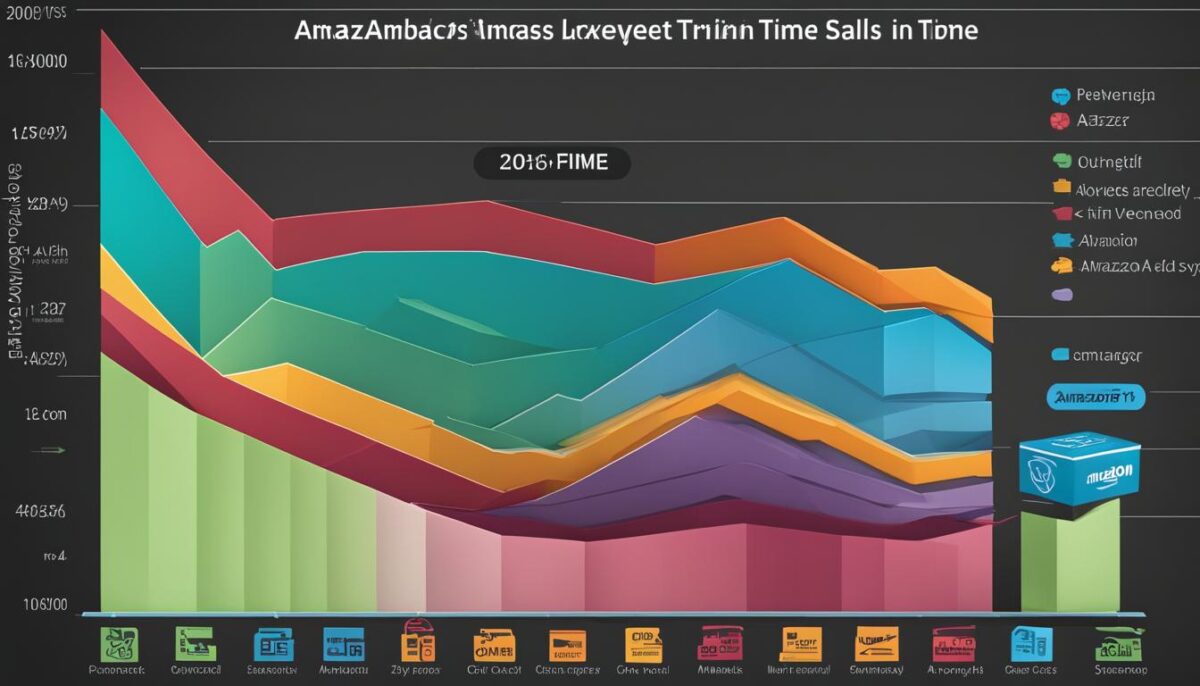Optimize Inventory with Stock Replenishment Algorithms
Inventory management is a critical aspect of any business, especially those dealing with physical goods. Without accurate management, businesses may face stockouts or, worse yet, oversupply that can lead to wastage and losses. To overcome these challenges, organizations adopt stock replenishment algorithms to streamline their inventory management and supply chain operations. These algorithms automate the replenishment process, ensuring optimal inventory levels and preventing stockouts while keeping costs low.
In this article, we will explore the concept of stock replenishment algorithms in detail, highlighting its benefits in optimizing inventory management and achieving supply chain optimization. We will also discuss various techniques and methodologies to optimize inventory levels and maintain optimal inventory levels.
Key Takeaways
- Stock replenishment algorithms automate the replenishment process to ensure optimal inventory levels and prevent stockouts.
- Accurate demand forecasting is crucial in stock replenishment algorithms.
- Effective warehouse management and inventory control are necessary to implement stock replenishment algorithms.
- Strategies such as economic order quantity and just-in-time approaches can be used for effective inventory planning.
- Technology such as advanced software systems and data analytics can enhance stock replenishment algorithms.
Understanding Inventory Management
Inventory management is the practice of overseeing and controlling a company’s inventory levels, ensuring that the right products are available in the right quantities and at the right time. Effective inventory management is vital to a company’s success, as it helps prevent stockouts, overstocking, and associated costs.
However, inventory management can be challenging, and there are several factors to consider for effective stock replenishment. These factors include:
- Demand variability: Demand for products can fluctuate based on a variety of factors such as seasonality, trends, and economic conditions, which can impact inventory level requirements.
- Lead times: The time it takes for a product to be replenished can range from several days to several weeks, which can impact inventory accuracy and require reliable forecasting techniques.
- Product diversification: Companies who offer a wide range of products may need to manage their inventory levels differently for each item, depending on product demand and shelf life.
To help companies manage these challenges and optimize their inventory levels effectively, it is important to implement stock replenishment algorithms. These algorithms automate the replenishment process, adjusting inventory levels based on actual demand, and reducing the risk of stockouts or excess inventory.
When creating an inventory management plan, it is essential to prioritize accurate demand forecasting, which can enable businesses to streamline operations and ensure that they can quickly respond to changes in customer needs. Additionally, warehouse management and inventory control are critical components of effective inventory management, as they ensure that products are correctly stored, organized, and labeled, minimizing errors and loss.
“Good inventory management is all about understanding your business and the demands of your customers; it’s about having a system that reflects your business requirements, and that helps promote growth and customer satisfaction.”
The Role of Stock Replenishment Algorithms
Stock replenishment algorithms play a critical role in ensuring efficient inventory replenishment, maintaining optimal stock levels, and reducing the risk of stockouts. These algorithms use advanced mathematical models and historical sales data to forecast future demand and determine the appropriate inventory levels to meet that demand.
By automating the replenishment process, businesses can save valuable time and resources that would otherwise be spent on manual inventory management. Stock replenishment algorithms can also help reduce excess inventory levels, which can negatively impact cash flow and warehouse capacity.
One key advantage of stock replenishment algorithms is their ability to factor in multiple variables, such as lead time, safety stock, and economic order quantity. This enables businesses to make data-driven decisions about inventory replenishment, resulting in more accurate inventory levels and ultimately reducing costs.
Furthermore, stock replenishment algorithms can proactively identify potential stockouts and generate automatic purchase orders, ensuring that inventory levels are always maintained at optimal levels. This helps businesses avoid stockouts, which can lead to lost sales, dissatisfied customers, and ultimately hurt the bottom line.
In conclusion, stock replenishment algorithms play a vital role in enabling businesses to automate their inventory replenishment process, maintain optimal inventory levels, and prevent stockouts. By leveraging these advanced algorithms, businesses can streamline their supply chain operations, increase efficiency, and ultimately improve their bottom line.
Benefits of Supply Chain Optimization
Supply chain optimization is crucial for businesses seeking to maintain a competitive edge in today’s fast-paced market. By streamlining logistics operations and enhancing efficiency, companies can realize numerous benefits, including:
- Reduced Costs: Optimizing the supply chain can lead to significant cost savings by reducing inventory carrying costs, transportation costs, and overhead expenses.
- Improved Efficiency: Efficient logistics operations enable businesses to meet customer demands in a timely and cost-effective manner, improving customer satisfaction and loyalty.
- Enhanced Customer Satisfaction: By optimizing the supply chain, businesses can improve delivery times, reduce errors, and ensure product availability, enhancing customer satisfaction and loyalty.
By leveraging advanced technologies and data analytics, companies can implement supply chain optimization techniques that enable them to adapt to changing market conditions and improve their bottom line.
“Supply chain optimization is a critical component of successful business operations in today’s complex and fast-paced market.”
Demand Forecasting for Effective Stock Replenishment
Accurate demand forecasting is a critical component of effective stock replenishment algorithms. By using historical sales data, current market trends, and other relevant factors, demand forecasting helps businesses anticipate customer demand and plan for optimal inventory levels.
With the help of demand forecasting, businesses can prevent stockouts, reduce excess inventory, and minimize the risk of lost sales. This not only improves customer satisfaction but also boosts operational efficiency and reduces costs.
Several methods are used for demand forecasting, including time-series analysis, regression analysis, and machine learning algorithms. The combination of these methods allows businesses to obtain a more accurate forecast and increase the reliability of stock replenishment algorithms.
Moreover, demand forecasting enables businesses to manage seasonal fluctuations and sudden changes in customer demand. For instance, during peak seasons or promotional periods, businesses can increase inventory levels to meet the anticipated surge in demand. Similarly, during periods of low demand, businesses can reduce inventory levels to avoid accumulating excess inventory that can lead to unnecessary costs.
Therefore, demand forecasting is not only essential for effective stock replenishment but also crucial for businesses to remain competitive within their industries.
Warehouse Management and Inventory Control
Effective stock replenishment algorithms require streamlined warehouse management and inventory control practices. Maintaining optimal inventory levels in different warehouses across the supply chain can be challenging without proper control mechanisms.

Warehouse managers must have real-time visibility of inventory levels and make rapid adjustments as needed to avoid stockouts or excess inventory. Advanced inventory management software provides real-time inventory tracking and automated processes to reduce manual errors in reporting and tracking inventory levels.
In addition to software, inventory control also requires effective human resources management and overseeing the physical space for storage and product movement within the warehouse. Develop a clear plan for organizing inventory within the warehouse can help reduce the time spent on receiving, identifying, and issuing products from the warehouse. Efficient warehouse practices enhance inventory control, effectively implementing stock replenishment algorithms, and creating an efficient supply chain from supplier to customer.
Strategies for Inventory Planning
Effective inventory planning is crucial for businesses. It ensures optimal stock levels and prevents stockouts, while also minimizing the risk of overstocks, reducing costs, and improving overall efficiency. Here are some practical inventory planning strategies:
Economic Order Quantity (EOQ)
EOQ is a well-established inventory planning strategy that determines the optimal reorder quantity for a particular product while balancing carrying costs and order costs. It involves calculating the right level of inventory necessary to meet customer demand without holding excess stock.
Just-In-Time (JIT) Approach
The JIT approach aims to maintain the smallest inventory levels feasible, relying on timely and precise delivery of goods that are closely matched to customer demand. This helps to reduce storage and carrying costs, minimize waste, and enhance overall productivity and efficiency.
ABC Analysis
ABC analysis is a method for categorizing products based on their overall value or turnover frequency. Products are classified into three groups: A items (high-value, low-frequency), B items (moderate-value, moderate-frequency), and C items (low-value, high-frequency). This helps businesses prioritize their inventory planning efforts and allocate resources accordingly.
Lead Time Optimization
Lead time optimization involves analyzing every step of the supply chain and identifying areas that can be streamlined or expedited. It ensures that goods are delivered on time, reducing the potential for stockouts and maintaining optimal inventory levels.
Remember, the most effective inventory planning strategy depends on the nature of the business, the industry, and specific product characteristics. Be sure to analyze your data, continuously monitor inventory levels, and make necessary adjustments to keep your stock optimized.
Inventory Optimization Techniques
Effective inventory management is essential for any business to operate smoothly. A significant aspect of inventory management is optimization, which ensures that the right amount of stock is available at the right time to meet customer demands without incurring excess costs. In this section, we’ll explore various inventory optimization techniques that businesses can implement to streamline their inventory management process and boost profitability.
Safety Stock Analysis
Safety stock analysis is a vital technique used to optimize inventory levels by calculating the minimum buffer stock required to meet unanticipated demand fluctuations. This technique requires businesses to consider various factors, including lead times, replenishment schedules, and demand volatility. By maintaining a safety stock, businesses can minimize stockouts and ensure that customer demands are always met.
ABC Analysis
ABC analysis is an inventory optimization technique that categorizes inventory items based on their value and contribution to the business’s profitability. This technique involves identifying inventory items with the highest importance (typically 20% of inventory items contributing 80% of sales) and prioritizing them for tight inventory control and frequent replenishment.
Lead Time Optimization
Lead time optimization is a technique used to optimize inventory levels by reducing the time it takes to receive orders from suppliers. This technique involves implementing strategies such as vendor-managed inventory (VMI) and just-in-time (JIT) inventory management. By reducing lead times, businesses can minimize their inventory carrying costs and operate more efficiently.
Leveraging Technology for Stock Replenishment
The rise of technology has transformed the way inventory management is approached, making it easier and more efficient to manage stock levels. Today, businesses can leverage advanced software systems and data analytics to enhance stock replenishment algorithms and improve overall inventory management.
By implementing a robust inventory management system, businesses can optimize stock replenishment algorithms to maintain optimal inventory levels, keep up with customer demand, and reduce the risk of stockouts. This strategic approach can help businesses reduce holding costs and increase profitability.
Advanced software systems make it possible to track stock levels in real-time, manage orders, and automate the replenishment process. With the right software, businesses gain more accurate insight into inventory levels and can make data-driven decisions about stock replenishment strategies.
Data analytics can help businesses track sales trends, monitor stock levels, and predict future demand. This capability allows businesses to make proactive decisions about inventory management, avoiding stock shortages and overstocking, which can lead to unnecessary holding costs.
“Effective inventory management requires efficient processes and the right technology to support it. Investing in modern inventory management solutions can help businesses save time, reduce costs, and improve overall efficiency.”
The Advantages of Leveraging Technology for Stock Replenishment
The benefits of leveraging technology for stock replenishment are numerous:
- Improved inventory management: Technology makes it possible to track inventory levels in real-time and automate the replenishment process, ensuring optimal stock levels and minimizing the risk of stockouts.
- Increased efficiency: With the right software systems in place, businesses can streamline inventory management processes, reducing manual work and saving time.
- Reduced costs: By maintaining optimal inventory levels and reducing the likelihood of stockouts, businesses can reduce holding costs and avoid the cost of lost sales.
- Enhanced customer satisfaction: With accurate inventory management, businesses can ensure that they always have the right products in stock to meet customer demand and ensure timely delivery.
Best Practices in Stock Replenishment
Implementing stock replenishment algorithms can significantly enhance inventory management and supply chain optimization. To ensure maximum effectiveness, businesses should follow these practical tips and best practices:
1. Monitor performance metrics
Regularly reviewing and assessing performance metrics is critical in evaluating the effectiveness of stock replenishment algorithms. Businesses should track key indicators such as stockout rates, inventory turnover, and order accuracy to identify areas for improvement.
2. Adopt continuous improvement initiatives
Continuous improvement initiatives ensure ongoing optimization of stock replenishment algorithms. Businesses should regularly revisit their processes and leverage feedback from customers and employees to identify and implement opportunities for improvement.
3. Leverage predictive analytics
Predictive analytics can improve demand forecasting accuracy, enabling businesses to adjust inventory levels in real-time and avoid stockouts. By leveraging historical sales data and market trends, businesses can enhance the precision of stock replenishment algorithms and optimize inventory management.
“Stock replenishment algorithms represent a significant opportunity to improve inventory management across the entire supply chain.”
4. Integrate inventory control with warehouse management
Effective warehouse management is essential in ensuring optimal inventory levels and improving stock replenishment algorithms. Integrating inventory control with warehouse management systems can enhance operational efficiency and enable businesses to meet customer demand efficiently.
5. Establish safety stock levels
Establishing safety stock levels can mitigate the risk of stockouts and ensure optimal inventory levels. By having a backup supply of inventory, businesses can avoid delivery delays, ensure business continuity, and improve customer satisfaction.
By following these best practices, businesses can optimize their inventory management and supply chain operations, driving improved efficiency, reduced costs, and enhanced customer satisfaction.
Conclusion
In conclusion, stock replenishment algorithms are an essential aspect of supply chain optimization and effective inventory management. By automating the replenishment process and ensuring optimal inventory levels, businesses can avoid stockouts, reduce costs, and enhance customer satisfaction.
It is crucial to understand the role of demand forecasting, warehouse management, inventory control, and inventory optimization techniques in implementing stock replenishment algorithms effectively. Furthermore, businesses can leverage technology to enhance their stock replenishment algorithms and improve overall inventory management.
By following best practices such as monitoring performance metrics and continuous improvement initiatives, businesses can achieve successful implementation of stock replenishment algorithms. Overall, it is imperative to recognize the significance of stock replenishment algorithms in achieving streamlined inventory management and effective supply chain optimization.
Learn More About Amazon Inventory Management
FAQ
What are stock replenishment algorithms?
Stock replenishment algorithms are mathematical models used to automate the process of replenishing inventory. These algorithms consider factors such as historical sales data, lead time, and order quantity to determine the optimal timing and quantity for replenishing stock.
Why is inventory management important?
Inventory management is crucial for businesses to ensure they have sufficient stock levels to meet customer demand while minimizing costs associated with overstocking. Effective inventory management helps optimize cash flow, reduce holding costs, and improve operational efficiency.
How do stock replenishment algorithms optimize inventory replenishment?
Stock replenishment algorithms automate the process of inventory replenishment by considering various factors, such as historical sales data, current stock levels, lead time, and order quantity. By analyzing these variables, the algorithms determine the optimal timing and quantity for replenishing inventory, ensuring that stock levels are maintained at an optimal level.
What are the benefits of supply chain optimization?
Supply chain optimization offers several benefits, including improved operational efficiency, reduced costs, enhanced customer satisfaction, and better overall business performance. By streamlining processes, optimizing inventory levels, and improving logistics, businesses can achieve significant improvements in their supply chain operations.
Why is demand forecasting important for stock replenishment?
Accurate demand forecasting is crucial for effective stock replenishment. By accurately predicting future demand, businesses can ensure that they have the right amount of inventory available at the right time. This helps reduce stockouts and overstocking, improve customer service levels, and enhance overall inventory management.
What is the role of warehouse management and inventory control in stock replenishment?
Warehouse management and inventory control play a critical role in implementing effective stock replenishment strategies. These functions ensure that inventory is properly stored, organized, and managed within the warehouse. By implementing efficient warehouse management practices and robust inventory control systems, businesses can optimize stock replenishment processes and maintain optimal inventory levels.
What are some strategies for effective inventory planning?
Businesses can employ various strategies for effective inventory planning, such as economic order quantity (EOQ), just-in-time (JIT) approaches, and vendor-managed inventory (VMI). These strategies help businesses optimize stock levels, minimize holding costs, and ensure timely replenishment of inventory.
What are some techniques for inventory optimization?
Inventory optimization techniques include safety stock analysis, ABC analysis, lead time optimization, and demand-driven planning. These techniques help businesses identify optimal stock levels, classify items based on their importance and demand, and streamline inventory management processes.
How can technology enhance stock replenishment?
Technology, such as advanced software systems and data analytics, can significantly enhance stock replenishment processes. It enables businesses to collect and analyze large volumes of data, identify trends and patterns, and make data-driven decisions. This leads to better inventory management, improved accuracy in demand forecasting, and more efficient stock replenishment.
What are some best practices for implementing stock replenishment algorithms?
Best practices for implementing stock replenishment algorithms include monitoring performance metrics, regularly reviewing and updating algorithms, collaborating with suppliers, implementing continuous improvement initiatives, and integrating algorithms with other systems, such as warehouse management and sales forecasting.












